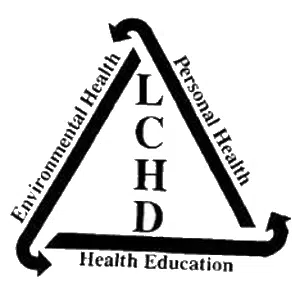Ottawa, IL – The LaSalle County Health Department is encouraging residents to test the radon level in their homes. Radon is a radioactive gas that occurs naturally in most soil. As radon travels through the soil, it can easily move through small spaces in a foundation and enter a building, where it becomes trapped and accumulates in the air.
Radon has no taste, smell, or color. Testing is the only way to find out if there is a dangerous level of radon in your home. The best time to test for radon is during cold weather when windows and doors are closed.
Most radon exposures occur in the home. When people breathe in radon, it damages the lungs, which can cause lung cancer. According to the Centers for Disease Control and Prevention (CDC), radon is the second leading cause of lung cancer after cigarette smoking. Radon can be found throughout Illinois and levels can vary from one home to another, even in the same neighborhood. It’s estimated more than 1,160 people in Illinois develop radon-related lung cancer each year according to the Illinois Emergency Management Agency (IEMA).
The Environmental Protection Agency (EPA) has established the radon action level at 4 picocuries per liter of air (4 pCi/L). At or above this level, it is recommended that corrective measures be taken to reduce indoor radon levels. Radon mitigation is the only effective way to reduce levels and decrease the risk of lung cancer. The most common radon reduction system involves the installation of a vent pipe and fan, which draws air from underneath a building and displaces it outside. The cost of a system varies depending on the reduction method chosen and the building size. Radon is a preventable health threat through testing and mitigation.
According to a study conducted by the Illinois Emergency Management Agency (IEMA), 41 percent of homes tested for radon in Illinois had levels higher than the action level of 4.0 picoCuries per liter (pCi/L). In addition, per the IEMA Public Radon Dashboard, the average radon measurement in LaSalle County is 7/pCi/L. “Testing for radon is simple and inexpensive, and it’s the only way to know if your family is at risk. Testing takes 3-7 days. Tests should be done on the lowest level of the home that is frequently occupied. Tests should not be done in kitchens, bathrooms, laundry rooms, or utility rooms. A short-term test is very easy to use and is best completed during the winter months when windows and doors are generally closed.” said Jennie Osborn, Director of Environmental Health at LaSalle County Health Department. The U.S. Environmental Protection Agency (USEPA) recommends you test your home for radon every two years.
In 2023, the LaSalle County Health Department gave out 249 test kits. One hundred fifty-three (153) of those test kits have been submitted for analysis, for a 61.4% usage rate. One hundred thirty-three (133) have produced valid results, with eighty-one (81) having a result above 4.0pCi/L. The average result of the kits analyzed in 2023 is 7.57 pCi/L.
LaSalle County Health Department, through a grant from the IEMA, has free radon test kits available to residents of LaSalle County. Test kits can be picked up at the health department during regular business hours (Mon.-Fri., 8:00 a.m. to 4:30 p.m.) at 717 E. Etna Road in Ottawa. A staff member will assist you with the instructions on using the test kit, as well as provide information regarding radon, radon measurement, and radon mitigation. Additionally, should your radon test results show a high level of radon in your home, the health department can provide you with a list of licensed radon measurement professionals and licensed radon mitigation professionals for follow-up.
Call the LaSalle County Health Department at (815) 433-3366, for more information on radon test kits.
Additional Resources:
Visit https://www.radon.com/instructions/ to view a testing kit instructional video.
IEMA Public Radon Dashboard https://ilema.maps.arcgis.com/apps/dashboards/93e4f4824a4046b48d1f35b7226069a8
For additional information, please visit https://www.epa.gov/radon.
